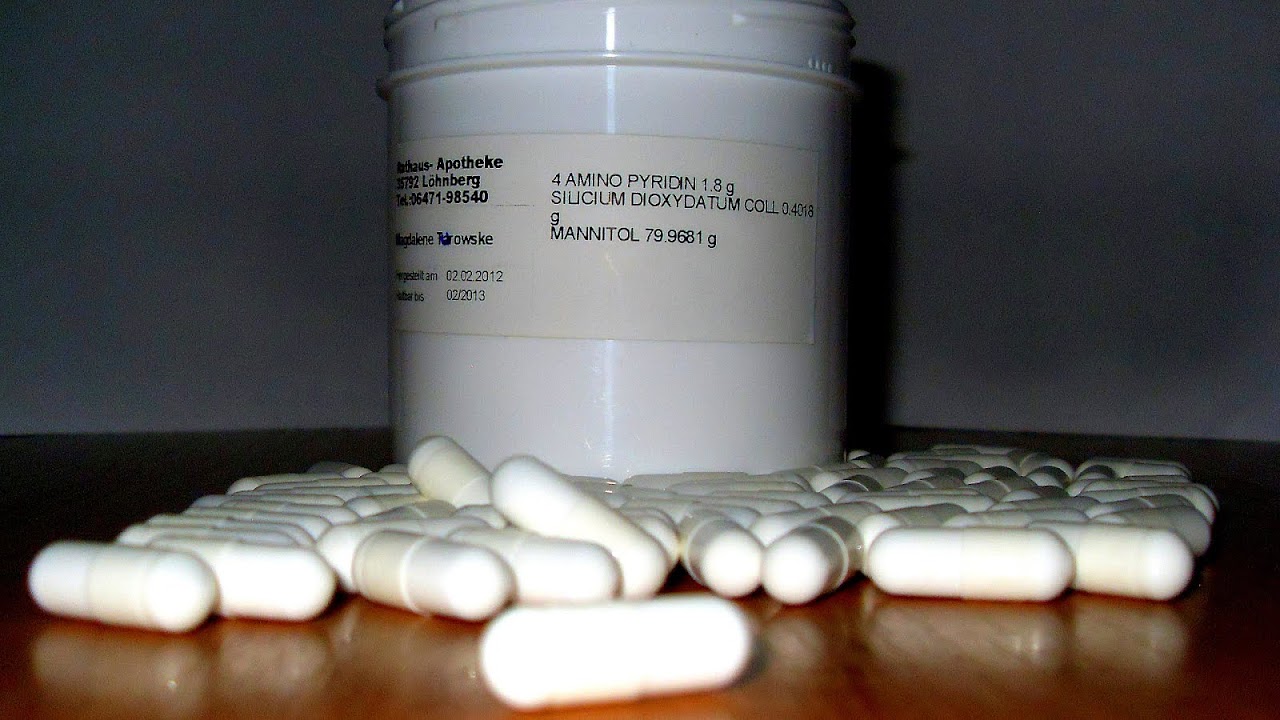
4-Aminopyridine (4-AP, INN fampridine, USAN dalfampridine) is an organic compound with the chemical formula C5H4N-NH2. The molecule is one of the three isomeric amines of pyridine. It is used as a research tool in characterizing subtypes of the potassium channel. It has also been used as a drug, to manage some of the symptoms of multiple sclerosis, and is indicated for symptomatic improvement of walking in adults with several variations of the disease. It was undergoing Phase III clinical trials as of 2008, and the U.S. Food and Drug Administration (FDA) approved the compound on January 22, 2010. Fampridine is also marketed as Ampyra (pronounced "am-PEER-ah," according to the maker's website) in the United States by Acorda Therapeutics and as Fampyra in Europe. In Canada, the medication has been approved for use by Health Canada since February 10, 2012.

Maps, Directions, and Place Reviews
Production
4-Aminopyridine is prepared by the decarbonylation of pyridine-4-carboxamide using sodium hypochlorite via the Hofmann rearrangement. The pyridine carboxamide is generated from the corresponding nitrile, which in turn is obtained from ammoxidation of 4-methylpyridine.
Ampyra Side Effects Video
Applications
The largest scale industrial application of 4-aminopyridine is as a precursor to the drug pinacidil, which affects potassium ion channels. The sequel to pinacidil, Naminidil was also derived from 4-aminopyridine. This is used as a hair growth stimulant.
In the laboratory, 4-AP is a useful pharmacological tool in studying various potassium conductances in physiology and biophysics. It is a relatively selective blocker of members of Kv1 (Shaker, KCNA) family of voltage-activated K+ channels. At concentration of 1 mM it selectively and reversibly inhibits Shaker channels without significant effect on other sodium, calcium, and potassium conductances.
Convulsant activity
4-Aminopyridine is a potent convulsant and is used to generate seizures in animal models for the evaluation of antiseizure agents
Vertebrate pesticide
4-Aminopyridine is also used under the trade name Avitrol as 0.5% or 1% in bird control bait. It causes convulsions and, infrequently, death, depending on dosage. The manufacturer says the proper dose should cause epileptic-like convulsions which cause the poisoned birds to emit distress calls resulting in the flock leaving the site; if the dose was sub-lethal, the birds will recover after 4 or more hours without long-term ill effect. The amount of bait should be limited so that relatively few birds are poisoned, causing the remainder of the flock to be frightened away with a minimum of mortality. A lethal dose will usually cause death within an hour. The use of 4-aminopyridine in bird control has been criticized by the Humane Society of the United States.
Medical use
Fampridine has been used clinically in Lambert-Eaton myasthenic syndrome and multiple sclerosis. It acts by blocking potassium channels, prolonging action potentials and thereby increasing neurotransmitter release at the neuromuscular junction. The drug has been shown to reverse saxitoxin and tetrodotoxin toxicity in tissue and animal experiments.
Multiple sclerosis
Fampridine has been shown to improve visual function and motor skills and relieve fatigue in patients with multiple sclerosis (MS). 4-AP is most effective in patients with the chronic progressive form of MS, in patients who are temperature sensitive, and in patients who have had MS for longer than three years. Common side effects include dizziness, nervousness and nausea, and the incidence of adverse effects was shown to be less than 5% in all studies.
4-AP works as a potassium channel blocker. Electrophysiologic studies of demyelinated axons show that augmented potassium currents increase extracellular potassium ion concentration which decreases action potential duration and amplitude which may cause conduction failure. Potassium channel blockade reverses this effect. A study has shown that 4-AP is a potent calcium channel activator and can improve synaptic and neuromuscular function by directly acting on the calcium channel beta subunit.
MS patients treated with 4-AP exhibited a response rate of 29.5% to 80%. A long-term study (32 months) indicated that 80-90% of patients who initially responded to 4-AP exhibited long-term benefits. Although improving symptoms, 4-AP does not inhibit progression of MS.
Spinal Cord Injury
Spinal cord injury patients have also seen improvement with 4-AP therapy. These improvements include sensory, motor and pulmonary function, with a decrease in spasticity and pain.
Parkinson's Disease
Dalfampridine completed Phase 2 clinical trials for Parkinson's disease in July 2014.
Tetrodotoxin poisoning
Clinical studies have shown that 4-AP is capable of reversing the effects of tetrodotoxin poisoning in animals, however, its effectiveness as an antidote in humans has not yet been determined.
Overdose
Case reports have shown that overdoses with 4-AP can lead to paresthesias, seizures, and atrial fibrillation.

Branding
The drug was originally intended, by Acorda Therapeutics, to have the brand name Amaya, however the name was changed to Ampyra to avoid potential confusion with other marketed pharmaceuticals.
Source of the article : Wikipedia


EmoticonEmoticon